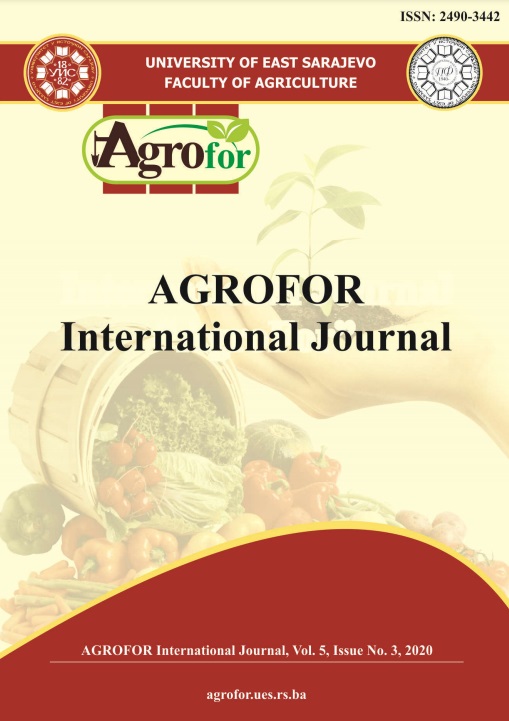BIOLOGICAL PECULIARITIES OF CYDALIMA PERSPECTALIS (WALKER, 1859) IN THE CONDITIONS OF THE REPUBLIC OF MOLDOVA
DOI:
https://doi.org/10.7251/AGRENG2003088EAbstract
The box tree moth Cydalima perspectalis (Walker, 1859) (Lepidoptera:
Crambidae), dangerous pest boxwood plants in East Asia (China, Japan and
Korea), is currently officially present in 35 countries of the Europe. In the
plantations of Buxus sempervirens in the central zone of the Republic of Moldova,
a new invasive pest C. perspectalis was revealed in several localities. As a result of
studying the biological peculiarities, it was found that the phytophage develops in
the republic in three generations, wintering at the stage of larvae of 2-3 ages. The
flight of imago in spring begins in May, the next generations appear in the middle
and end of summer. Flight of imago and oviposition can continue until September-
October with overlapping generations. The development of eggs at a temperature
of + 25 ± 2 oC continued 3-5 days on average, the development of larvae was 20-36
days, the stage of the pupa – 12 ± 1.0 days. Lowering the temperature increased the
duration of each stage. Moldovan populations box tree moth, as well as all the
other populations described earlier from Asia and Europe, have several different
types of wing colouring – typical (white), intermediate and melanic morphs. Pest
monitoring is required to control population density. To manage the density of pest
populations, it is necessary to use both traps with sex pheromone and
microbiological and chemical preparations, depending on the situation.

